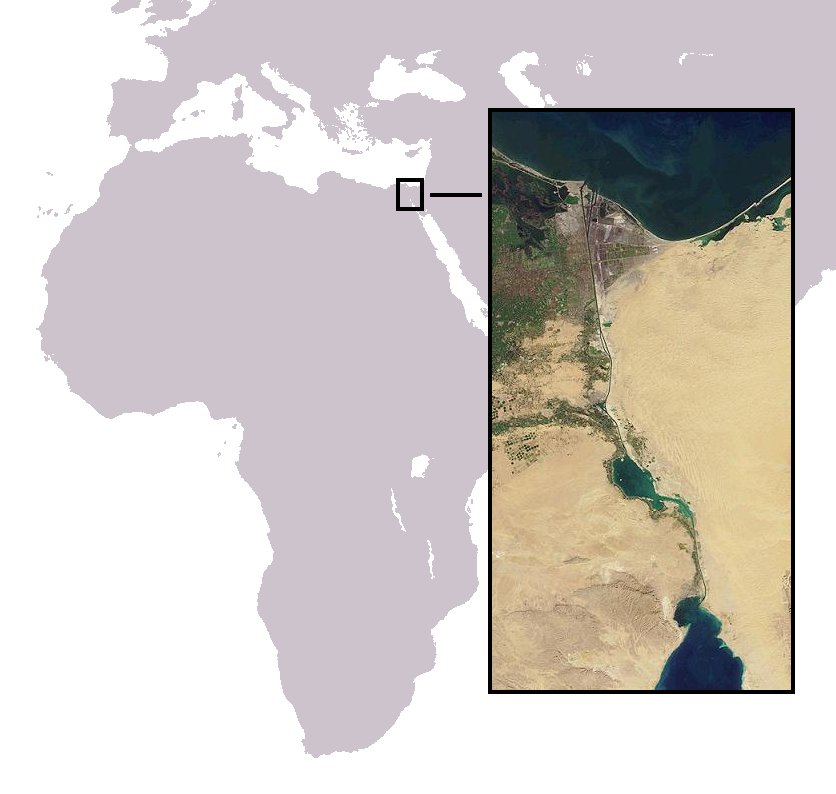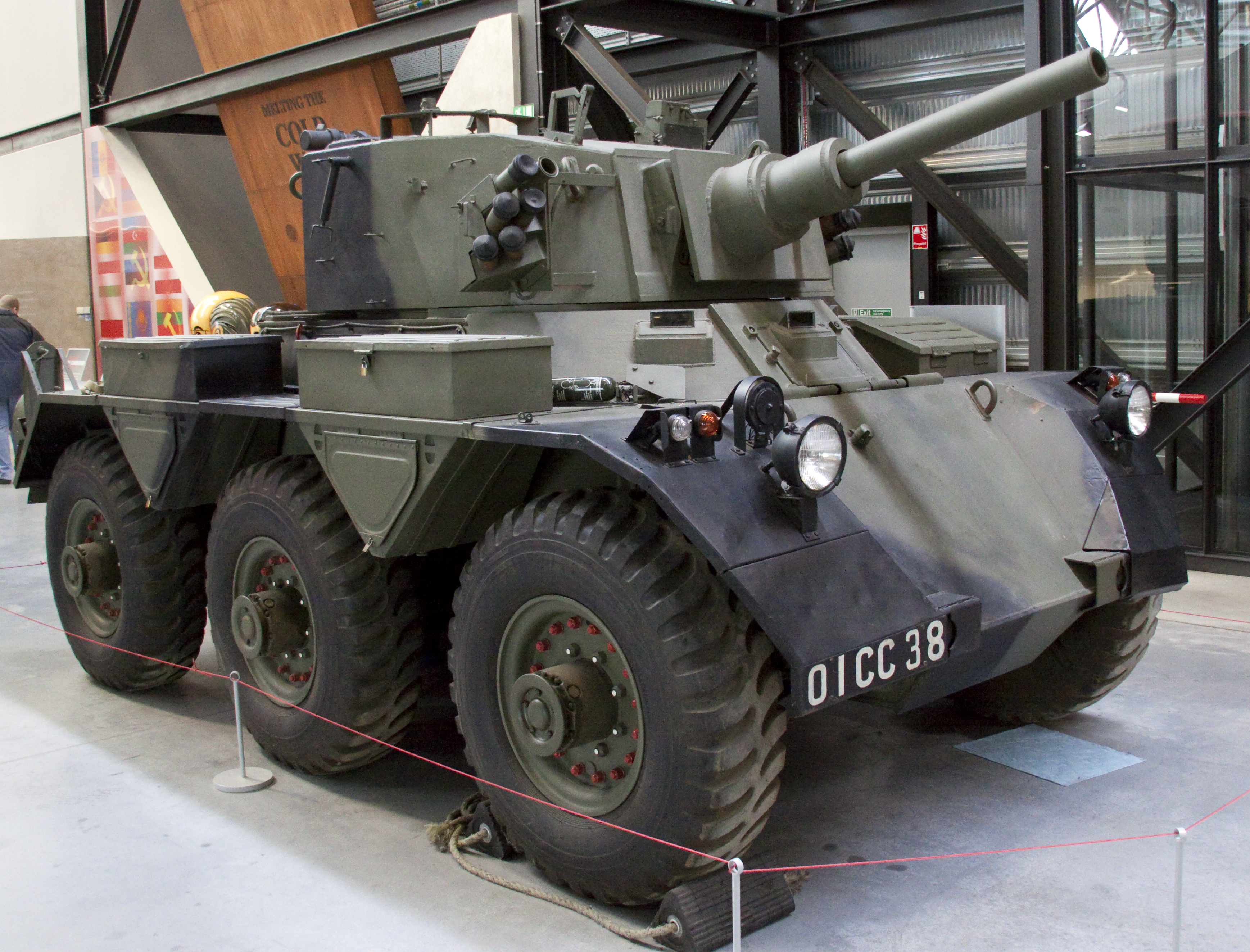|
Ferret Armored Car
The Ferret armoured car, also commonly called the Ferret scout car, is a British armoured fighting vehicle designed and built for reconnaissance purposes. The Ferret was produced between 1952 and 1971 by the UK company Daimler. It was widely used by regiments in the British Army, as well as the RAF Regiment and Commonwealth countries throughout the period. History The Ferret was developed in 1949 as a result of a British Army requirement issued in 1947. 'Light reconnaissance cars' existed during the Second World War, notably the Daimler Dingo. Given its experience with the successful Dingo (6,626 produced and one of two British AFVs produced throughout WWII) Daimler was awarded a development contract in October 1948, and in June 1950 the first prototype of the Car, Scout, 4×4, Liaison (Ferret) Mark 1 was delivered. Designated the FV 701(C), it was one of several versions resembling the original Daimler scout cars, and represented the basic model Ferret. This shared many simi ... [...More Info...] [...Related Items...] OR: [Wikipedia] [Google] [Baidu] |
South African Defence Force
The South African Defence Force (SADF) (Afrikaans: ''Suid-Afrikaanse Weermag'') comprised the armed forces of South Africa from 1957 until 1994. Shortly before the state reconstituted itself as a republic in 1961, the former Union Defence Force was officially succeeded by the SADF, which was established by the Defence Act (No. 44) of 1957. The SADF, in turn, was superseded by the South African National Defence Force in 1994. Mission and structure The SADF was organised to perform a dual mission: to counter possible insurgency in all forms, and to maintain a conventional military arm which could defend the republic's borders, making retaliatory strikes as necessary. As the military expanded during the 1970s, the SADF general staff was organised into six sections—finance, intelligence, logistics, operations, personnel, and planning; uniquely, the South African Medical Service (SAMS) was made co-equal with the South African Army, the South African Navy and the South African ... [...More Info...] [...Related Items...] OR: [Wikipedia] [Google] [Baidu] |
Suez Crisis
The Suez Crisis, or the Second Arab–Israeli war, also called the Tripartite Aggression ( ar, العدوان الثلاثي, Al-ʿUdwān aṯ-Ṯulāṯiyy) in the Arab world and the Sinai War in Israel,Also known as the Suez War or 1956 War; other names include the ''Sinai war'', ''Suez–Sinai war'', ''1956 Arab–Israeli war'', the Second Arab–Israeli war, ''Suez Campaign'', ''Sinai Campaign'', ''Kadesh Operation'' and ''Operation Musketeer'' was an invasion of Egypt in late 1956 by Israel, followed by the United Kingdom and France. The aims were to regain control of the Suez Canal for the Western powers and to remove Egyptian president Gamal Abdel Nasser, who had just swiftly nationalised the foreign-owned Suez Canal Company, which administered the canal. Israel's primary objective was to re-open the blocked Straits of Tiran. After the fighting had started, political pressure from the United States, the Soviet Union and the United Nations led to a withdrawal by the ... [...More Info...] [...Related Items...] OR: [Wikipedia] [Google] [Baidu] |
Gasoline Engine
A petrol engine (gasoline engine in American English) is an internal combustion engine designed to run on petrol (gasoline). Petrol engines can often be adapted to also run on fuels such as liquefied petroleum gas and ethanol blends (such as ''E10'' and ''E85''). Most petrol engines use spark ignition, unlike diesel engines which typically use compression ignition. Another key difference to diesel engines is that petrol engines typically have a lower compression ratio. Design Thermodynamic cycle Most petrol engines use either the four-stroke Otto cycle or the two-stroke cycle. Petrol engines have also been produced using the Miller cycle and Atkinson cycle. Layout Most petrol-powered piston engines are straight engines or V engines. However, flat engines, W engines and other layouts are sometimes used. Wankel engines are classified by the number of rotors used. Compression ratio Cooling Petrol engines are either air-cooled or water-cooled. Ignition Petrol en ... [...More Info...] [...Related Items...] OR: [Wikipedia] [Google] [Baidu] |
Straight-6
The straight-six engine (also referred to as an inline-six engine; abbreviated I6 or L6) is a piston engine with six cylinders arranged in a straight line along the crankshaft. A straight-six engine has perfect primary and secondary engine balance, resulting in fewer vibrations than other designs of six or less cylinders. Until the mid-20th century, the straight-six layout was the most common design for engines with six cylinders. However, V6 engines became more common from the 1960s and by the 2000s most straight-six engines had been replaced by V6 engines. An exception to this trend is BMW which has produced automotive straight-six engines from 1933 to the present day. Characteristics In terms of packaging, straight-six engines are almost always narrower than a V6 engine or V8 engine, but longer than straight-four engines, V6s, and most V8s. Straight-six engines are typically produced in displacements ranging from , however engines ranging in size from the Benelli 750 ... [...More Info...] [...Related Items...] OR: [Wikipedia] [Google] [Baidu] |
Rolls-Royce B Range Engines
The Rolls-Royce B range was a range of petrol engines first intended to be installed in a car but in 1943 developed into a range to power the British Army's wheeled vehicles.Rolls-Royce Motors Holdings Limited. ''The Times'', Monday, May 07, 1973; pg. 23; Issue 58775 The Alvis Saladin and Rolls-Royce Phantom IV were fitted with 8-cylinder versions. Overview Common features The B range of engines were all of the inline configuration, with crossflow inlet-over-exhaust cylinder heads and were naturally aspirated. They were heavily rationalized engines, which made use of as many common parts across the range as possible, for example, the 8 cylinder versions used 2 sets of the oil bath air filters, exhaust manifolds and points components of the 4 cylinder, while using the same carburettor as the 6. Pistons, rods, valves, springs, liners, etc. were common across the range, until the introduction of the overbored xx1 series, which still attempted to use as many common componen ... [...More Info...] [...Related Items...] OR: [Wikipedia] [Google] [Baidu] |
M1919 Browning Machine Gun
The M1919 Browning is a .30 caliber medium machine gun that was widely used during the 20th century, especially during World War II, the Korean War, and the Vietnam War. The M1919 saw service as a light infantry, coaxial, mounted, aircraft, and anti-aircraft machine gun by the U.S. and many other countries. The M1919 was an air-cooled development of the standard US machine gun of World War I, the John M. Browning-designed water-cooled M1917. The emergence of general-purpose machine guns in the 1950s pushed the M1919 into secondary roles in many cases, especially after the arrival of the M60 in US Army service. The United States Navy also converted many to 7.62 mm NATO, and designated them Mk 21 Mod 0; they were commonly used on riverine craft in the 1960s and 1970s in Vietnam. Many NATO countries also converted their examples to 7.62 mm caliber, and these remained in service well into the 1990s, as well as up to the present day in some countries. Operation Loading The ... [...More Info...] [...Related Items...] OR: [Wikipedia] [Google] [Baidu] |
GPMG
A general-purpose machine gun (GPMG) is an air-cooled, usually belt-fed machine gun that can be adapted flexibly to various tactical roles for light and medium machine guns. A GPMG typically features a quick-change barrel design calibered for various fully powered cartridges such as the 7.62×51mm NATO, 7.62×54mmR, 7.5×54mm French, 7.5×55mm Swiss and 7.92×57mm Mauser, and be configured for mounting to different stabilizing platforms from bipods and tripods to vehicles, aircraft, boats and fortifications, usually as an infantry support weapon or squad automatic weapon. History The general-purpose machine gun (GPMG) originated with the MG 34, designed in 1934 by Heinrich Vollmer of Mauser on the commission of Nazi Germany to circumvent the restrictions on machine guns imposed by the Treaty of Versailles. It was introduced into the Wehrmacht as an entirely new concept in automatic firepower, dubbed the ''Einheitsmaschinengewehr'', meaning "universal machine gun" in German. ... [...More Info...] [...Related Items...] OR: [Wikipedia] [Google] [Baidu] |
Armoured Fighting Vehicle
An armoured fighting vehicle (AFV) is an armed combat vehicle protected by armour, generally combining operational mobility with offensive and defensive capabilities. AFVs can be wheeled or tracked. Examples of AFVs are tanks, armoured cars, assault guns, self-propelled guns, infantry fighting vehicles, and armoured personnel carriers. Armoured fighting vehicles are classified according to their characteristics and intended role on the battlefield. The classifications are not absolute; two countries may classify the same vehicle differently, and the criteria change over time. For example, relatively lightly armed armoured personnel carriers were largely superseded by infantry fighting vehicles with much heavier armament in a similar role. Successful designs are often adapted to a wide variety of applications. For example, the MOWAG Piranha, originally designed as an APC, has been adapted to fill numerous roles such as a mortar carrier, infantry fighting vehicle, and ... [...More Info...] [...Related Items...] OR: [Wikipedia] [Google] [Baidu] |
Russian Invasion Of Ukraine
On 24 February 2022, in a major escalation of the Russo-Ukrainian War, which began in 2014. The invasion has resulted in tens of thousands of deaths on both sides. It has caused Europe's largest refugee crisis since World War II. An estimated 8 million Ukrainians were displaced within their country by late May and 7.8 million fled the country by 8 November 2022, while Russia, within five weeks of the invasion, experienced its greatest emigration since the 1917 October Revolution. Following the 2014 Ukrainian Revolution, Russia annexed Crimea, and Russian-backed paramilitaries seized part of the Donbas region of south-eastern Ukraine, which consists of Luhansk and Donetsk oblasts, sparking a regional war. In March 2021, Russia began a large military build-up along its border with Ukraine, eventually amassing up to 190,000 troops and their equipment. Despite the build-up, denials of plans to invade or attack Ukraine were issued by various Russian gover ... [...More Info...] [...Related Items...] OR: [Wikipedia] [Google] [Baidu] |
Invasion Of Kuwait
The Iraqi invasion of Kuwait was an operation conducted by Iraq on 2 August 1990, whereby it invaded the neighboring State of Kuwait, consequently resulting in a seven-month-long Iraqi military occupation of the country. The invasion and Iraq's subsequent refusal to withdraw from Kuwait by a deadline mandated by the United NationsUnited Nations Security Council Resolution 660 (Condemning the Invasion of Kuwait by Iraq), S.C. Res. 660, 45 U.N. SCOR at 19, U.N. Doc. S/RES/660 (1990) . umn.edu. Retrieved on 12 June 2011 led to a direct military intervention by a [...More Info...] [...Related Items...] OR: [Wikipedia] [Google] [Baidu] |
Iran–Iraq War
The Iran–Iraq War was an armed conflict between Iran and Iraq that lasted from September 1980 to August 1988. It began with the Iraqi invasion of Iran and lasted for almost eight years, until the acceptance of United Nations Security Council Resolution 598 by both sides. Iraq's primary rationale for the attack against Iran cited the need to prevent Ruhollah Khomeini—who had spearheaded Iran's Islamic Revolution in 1979—from exporting the new Iranian ideology to Iraq; there were also fears among the Iraqi leadership of Saddam Hussein that Iran, a theocratic state with a population predominantly composed of Shia Muslims, would exploit sectarian tensions in Iraq by rallying Iraq's Shia majority against the Baʽathist government, which was officially secular and dominated by Sunni Muslims. Iraq also wished to replace Iran as the power player in the Persian Gulf, which was not seen as an achievable objective prior to the Islamic Revolution because of Pahlavi Iran's economi ... [...More Info...] [...Related Items...] OR: [Wikipedia] [Google] [Baidu] |





.jpg)



